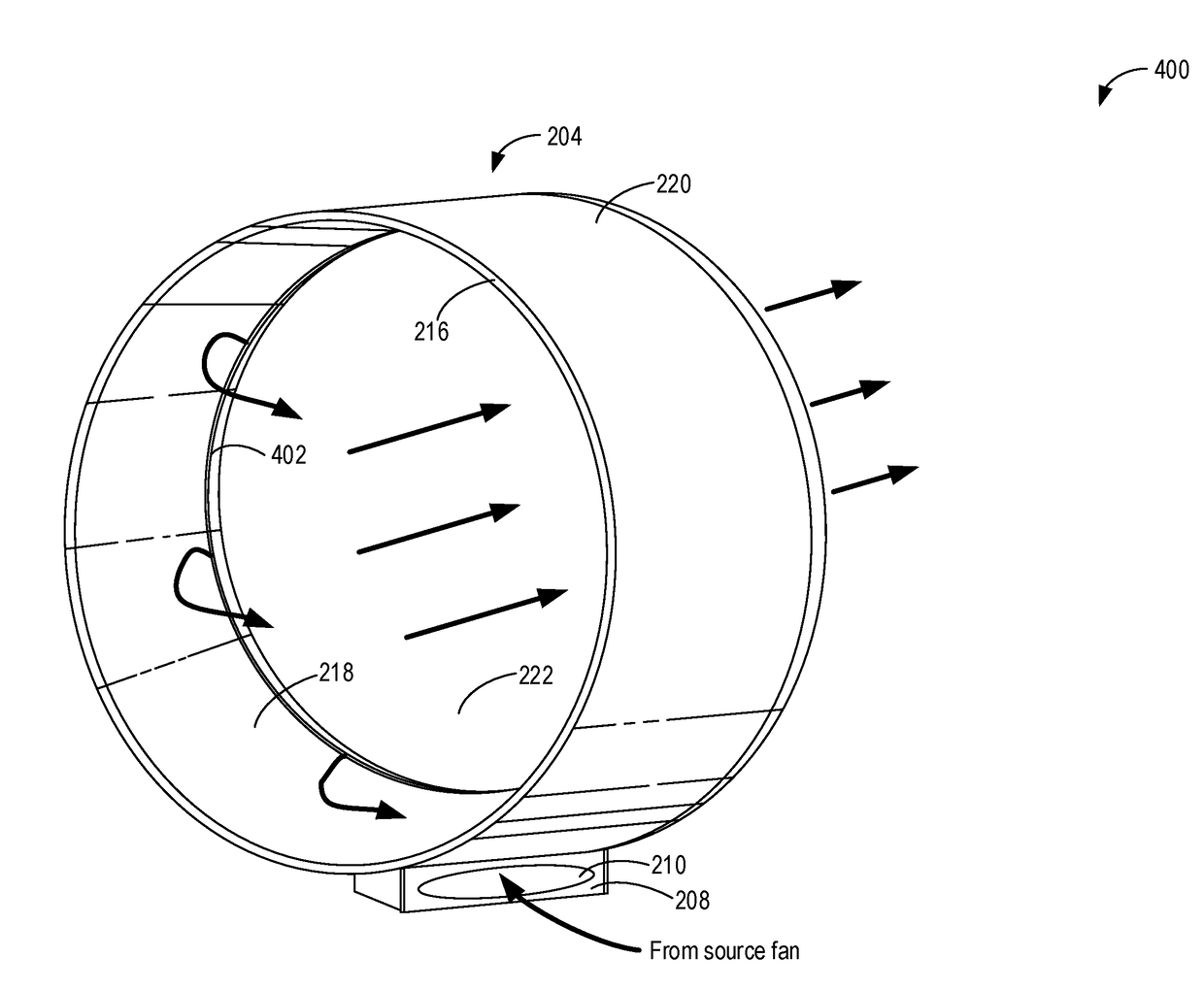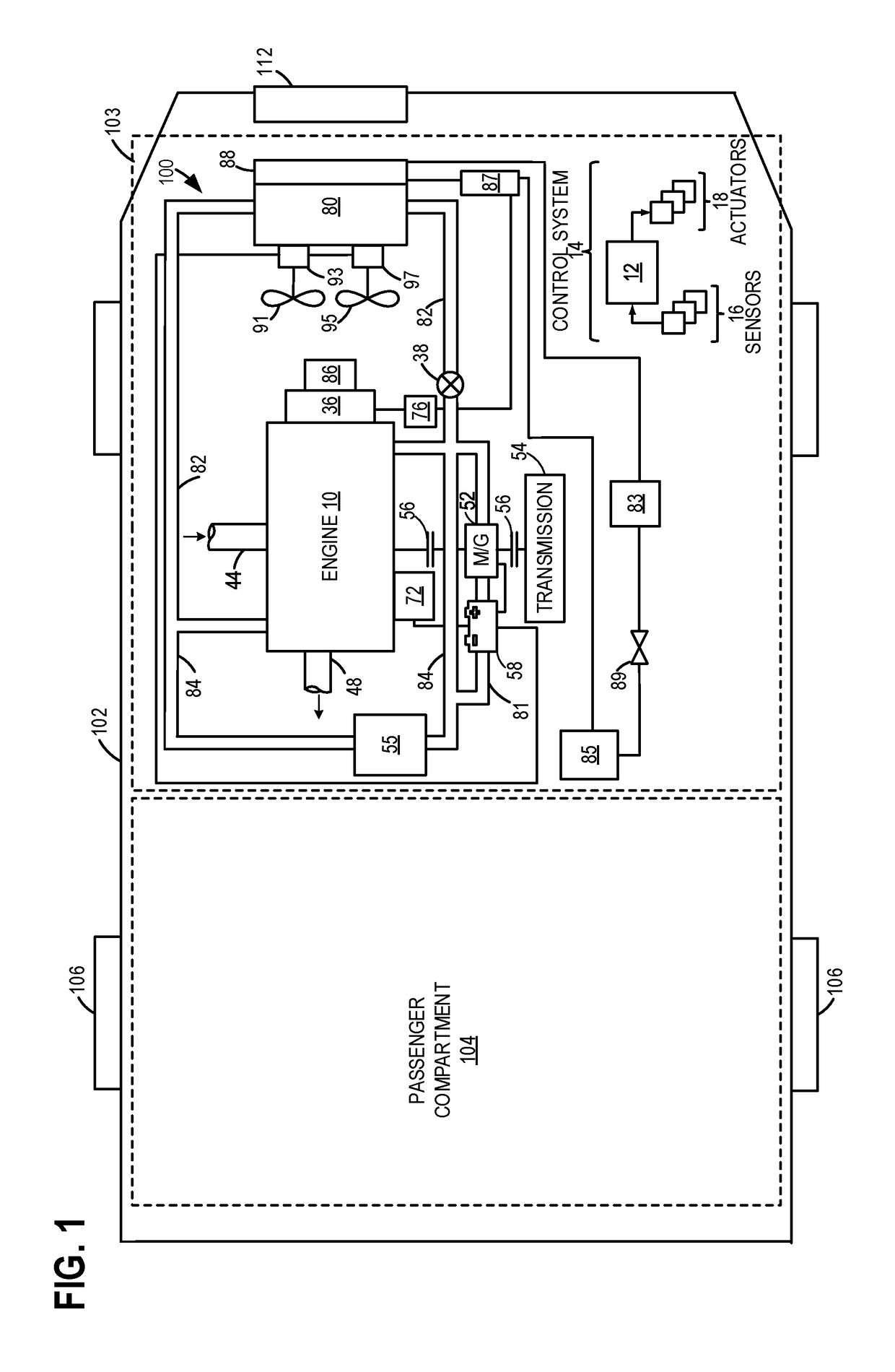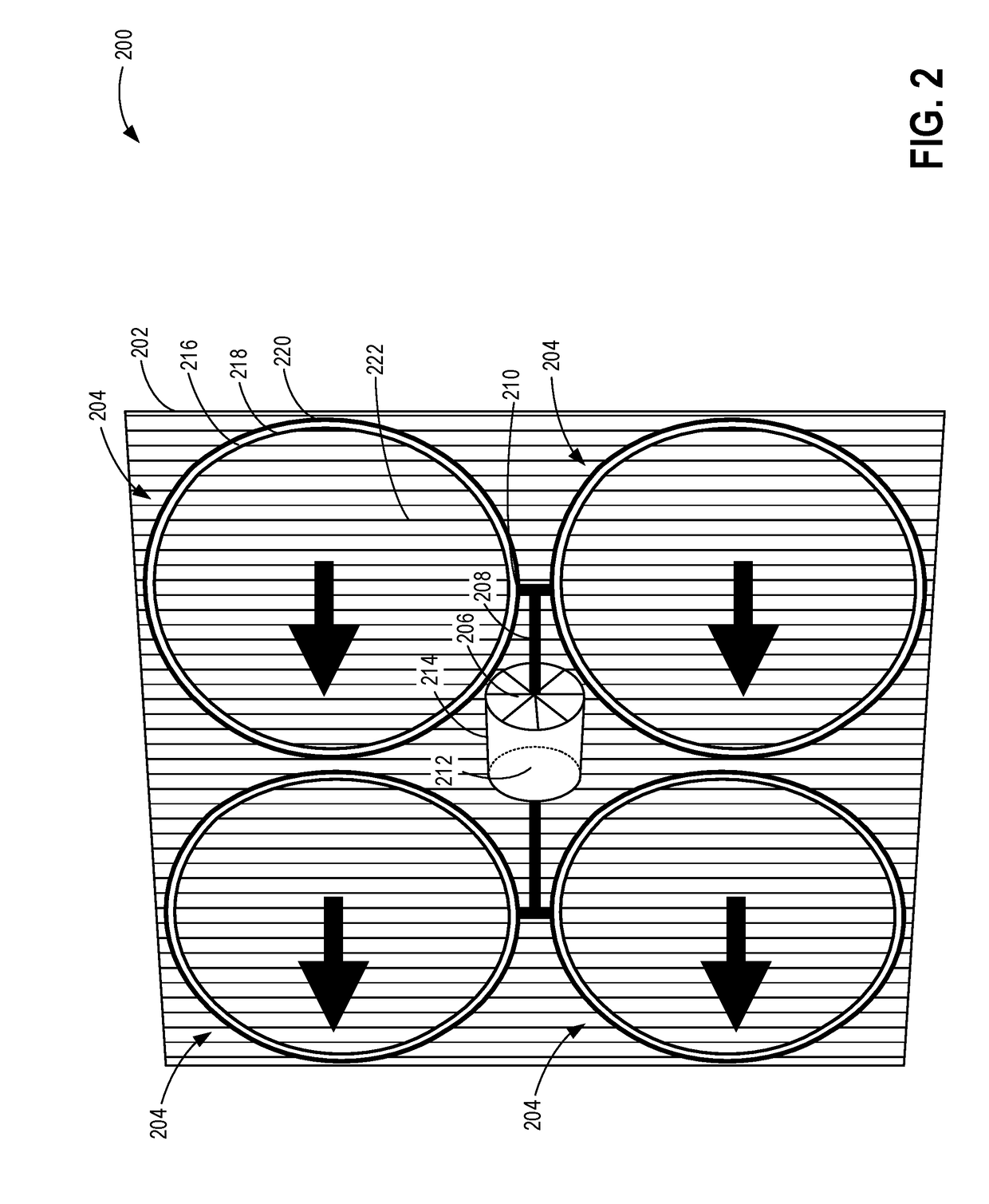Cooling fans for engine cooling system
a technology for cooling fans and engines, applied in the field of cooling fans, can solve the problems of cooling fans that may be noisy, noise objectionable to vehicle customers, cooling fans, etc., and achieve the effects of reducing fuel economy, reducing fuel economy, and reducing airflow to the engine compartmen
- Summary
- Abstract
- Description
- Claims
- Application Information
AI Technical Summary
Benefits of technology
Problems solved by technology
Method used
Image
Examples
Embodiment Construction
[0018]The following description relates to a bladeless cooling fan for a vehicle cooling system, such as the cooling system of FIG. 1. Example configurations for a bladeless cooling fan having a source fan coupled to a Helmholtz resonator are shown in FIGS. 2-3. Various views of the fan are shown in FIGS. 7-9. An example entrainment disc is shown in FIG. 4. A controller may be configured to perform a routine, such as the example routine of FIG. 5, to operate the cooling fan in accordance with various vehicle cooling demands. For example, the cooling fan may be activated at lower vehicle speeds and deactivated at higher vehicle speeds, such as illustrated in the example graph of FIG. 10. In this way, the cooling fan provides improvements over cooling fans in the prior art, such as the fan shown in FIG. 6 and described below.
[0019]FIG. 1 is a schematic depiction of an example embodiment of a vehicle cooling system 100 in a motor vehicle 102. Vehicle 102 has wheels 106, a passenger com...
PUM
 Login to View More
Login to View More Abstract
Description
Claims
Application Information
 Login to View More
Login to View More - R&D
- Intellectual Property
- Life Sciences
- Materials
- Tech Scout
- Unparalleled Data Quality
- Higher Quality Content
- 60% Fewer Hallucinations
Browse by: Latest US Patents, China's latest patents, Technical Efficacy Thesaurus, Application Domain, Technology Topic, Popular Technical Reports.
© 2025 PatSnap. All rights reserved.Legal|Privacy policy|Modern Slavery Act Transparency Statement|Sitemap|About US| Contact US: help@patsnap.com



